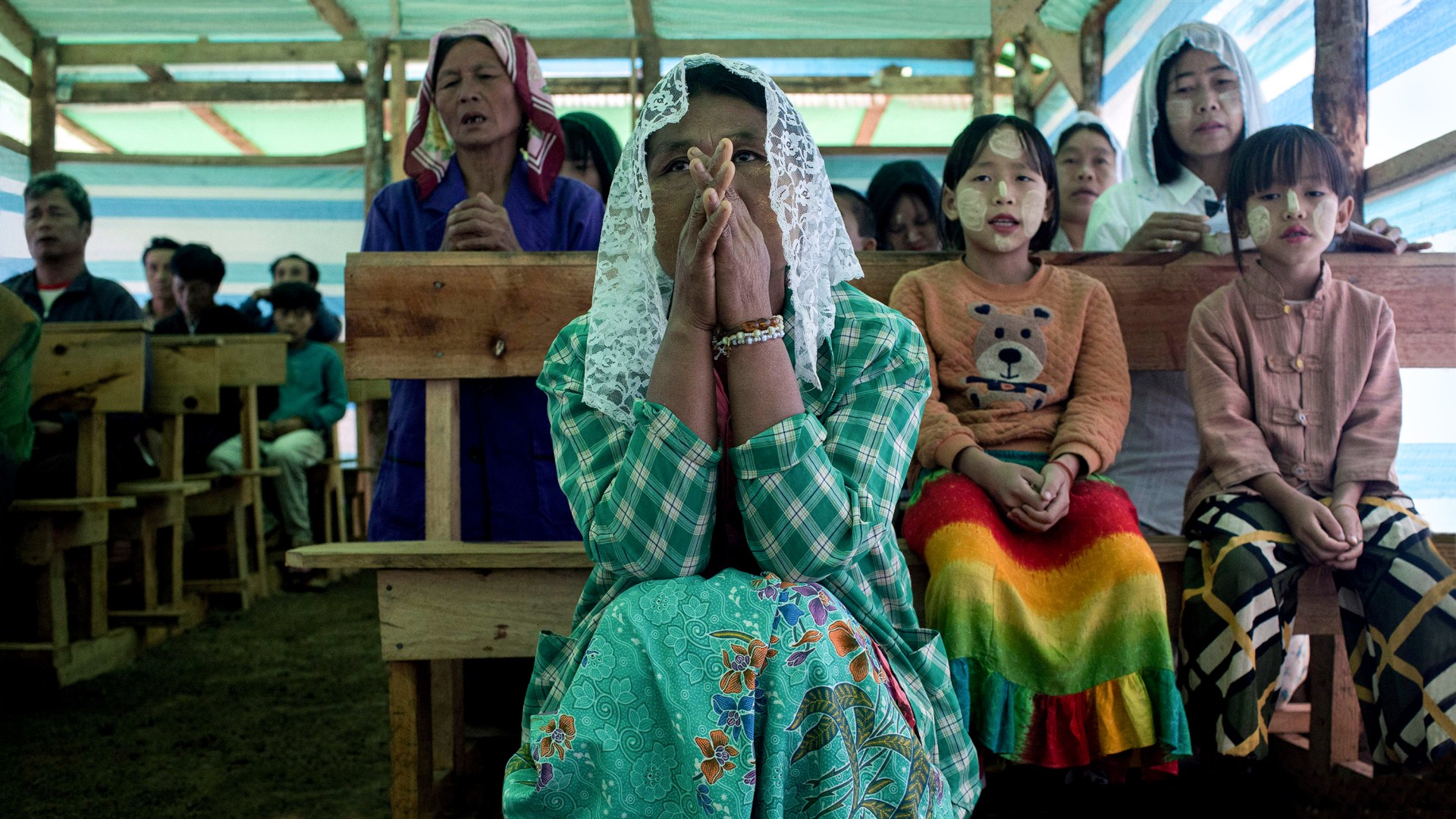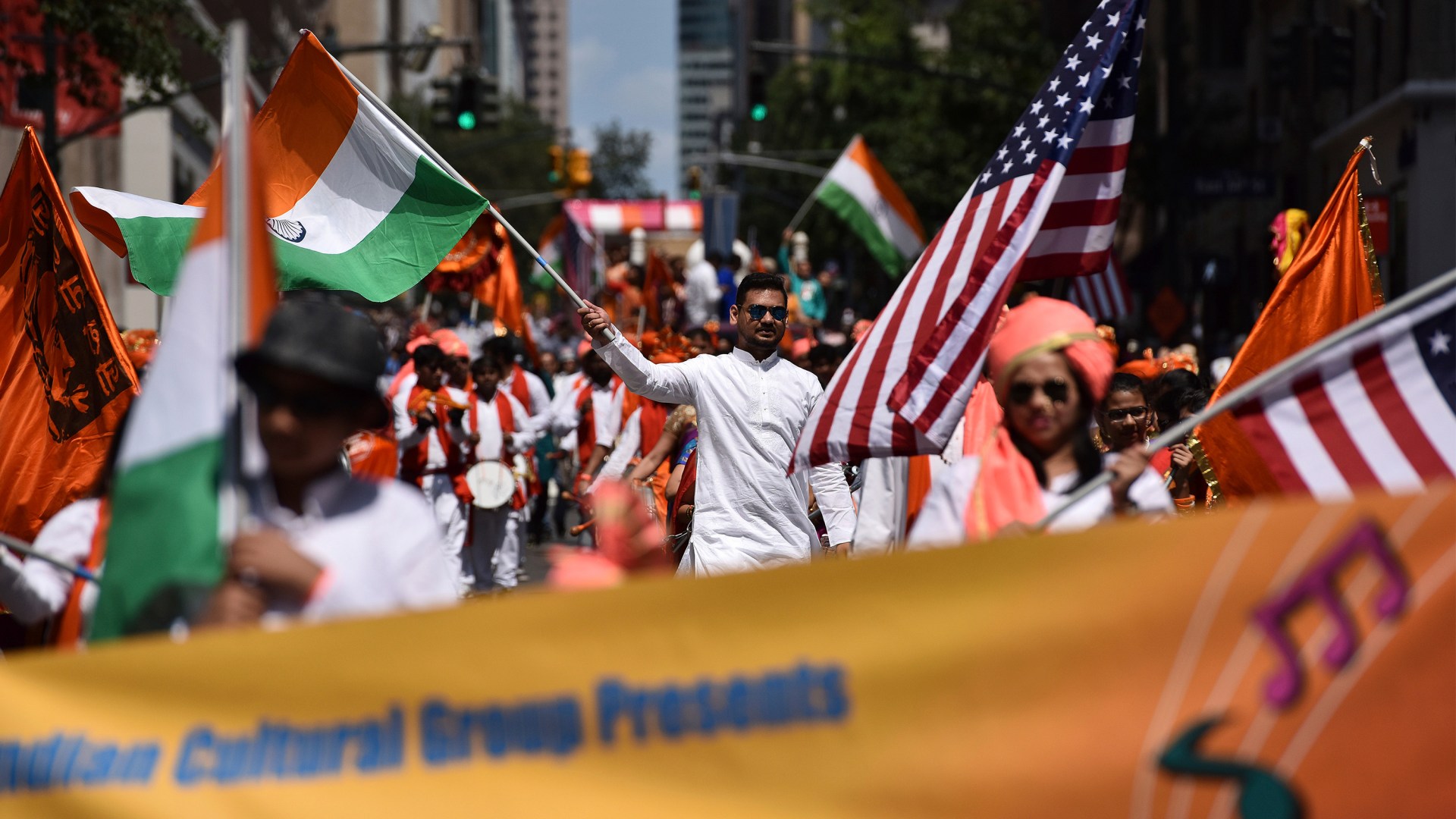In a deep red swath of Pennsylvania, houses, roadways, and businesses are bristling with campaign signs, most bearing the name of Donald Trump or his Make America Great Again slogan.
Brodie Whitley, a Presbyterian living in Grove City, plans to vote for Trump, but her favorite sign has another message: “Politics are temporary. Jesus is forever.”
“That’s the sign I want,” she said.
Overall, there’s been less focus on religious outreach by either campaign this election cycle, less talk of religion, and fewer faith events. Most Americans don’t see either candidate as particularly religious.
But in the final days of the campaign, both former president Trump and Vice President Kamala Harris are doing more to evoke God in their messaging—and to appeal to Christian voters in battleground states like Pennsylvania, Georgia, and Michigan.
Trump and Harris have held events in Georgia churches in recent weeks. They each offered remarks to different crowds on how the country needs faith—with contrasting ideas of how to live that out in office.
The gathering was put on by the National Faith Advisory Board, made up of Trump’s former faith advisors and led by Pentecostal evangelist Paula White-Cain. The lineup listed several leaders who had been involved in Evangelicals for Trump events in previous campaigns: Franklin Graham, Eric Metaxas, Jack Graham, Greg Laurie, Samuel Rodriguez, and Jentezen Franklin.
At an event outside Atlanta on Monday, Trump promised Christians they’d have the opportunity to influence a second Trump administration.
Trump told White-Cain that he’d reinstall a faith office to hear out evangelicals in the White House. (While president, Trump had scrapped the White House Office of Faith-Based and Neighborhood Partnerships, which had been resurrected under Biden.)
Trump also talked about religion being under threat in the US.
“We’re going through a lot of problems in our country … and it’s less based on religion than it was 25 years ago and 50 years ago,” he said. “We were a really, people would say a Christian, and really religious, even other faiths country, and that seems to be heading in the wrong direction.”
Trump has repeated a similar message of faith under fire at other events, including at a “Believers for Trump” event earlier this month in Michigan, an initiative launched this summer to drive turnout among churchgoers in battleground states. Individuals can sign up to be a “Church Captain” to encourage their churches to vote.
The former president told the crowd in Georgia that Christians aren’t doing enough when it comes to this election: “I shouldn’t scold anyone, but Christians aren’t known for being very solid voters.”
Ben Carson, the Seventh-day Adventist doctor and 2016 presidential hopeful, leads Trump’s faith outreach. He told CT in a statement that the campaign will continue to remind voters that Trump “did more for the faith community than any president in history.”
Carson listed religious freedom, women’s sports, and abortion as key issues for faith voters. Though Trump has called himself “the most pro-life president” for appointing the justices who helped overturn Roe v. Wade, some evangelicals have been disappointed in the GOP’s shifting platform on the issue.
At a “Believers and Ballots” town hall at Christ Chapel in Zebulon, Georgia, Trump called religion “the glue that holds it all together” and repeated his concerns of how Christians are facing “persecution.”
“When you have faith, when you believe in God, it’s a big advantage over people who don’t have that,” he said.
A new survey by the nonpartisan Public Religion Research Institute (PRRI) and the Brookings Institution has found that Christian support for the candidates splits on racial lines.
Among weekly churchgoers, three-quarters of white Christians (76%) support Trump and 21 percent support Harris, while 13 percent of Black Christians support Trump and 85 percent support Harris.
Churchgoing Latinos are more evenly divided. Just over half side with Trump (55%) compared to 41 percent with Harris.
The Democratic candidate has also sought to appeal to people of faith, stopping by churches on Sundays as part of the “souls to the polls” drive to increase voter turnout among Black Christians. At each visit, Harris has reminded believers of the importance of taking time to vote.
At New Birth Missionary Baptist Church in Stonecrest, Georgia, she told congregants that “our country is at a crossroads, and where we go from here is up to us as Americans and as people of faith.”
“We face this question: What kind of country do we want to live in?” Harris said. “A country of chaos, fear and hate, or a country of freedom, compassion and justice?”
At other events, the vice president has spoken about growing up singing in the choir and going to Sunday school at a Black Baptist church she attended with her neighbor.
Harris grew up with a Hindu mother and a Baptist father and identifies as Baptist. She described her faith as being driven by a belief in a “loving God who asks us to speak up for those who cannot speak for themselves, and to defend the rights of the poor and the needy.”
Last week, Harris told CNN’s Anderson Cooper that she prays “every day, sometimes twice a day.” After President Joe Biden withdrew from the race, she called her longtime pastor, Amos Brown of Third Baptist Church of San Francisco, to ask for prayer. “I needed that advice. I needed a prayer,” she said.
On Sunday at a majority Black church in Philadelphia, Harris said she drew inspiration from Paul. “In hard times when we may grow weary in doing good, we must remember the power that works within us, the divine power that transformed Paul’s life, guided him through shipwreck and sustained him through trials.”
She encouraged congregants to vote and said she was confident in the outcome: “When I think about the days ahead and the God we serve, yeah, I am confident that his power will work through us. Because, church, I know we were born for a time such as this.”
Some Christian voters would find analogies of trials and shipwrecks to be apt descriptors of this election year.
Back in 2016, Benjamin Carlucci, who lives in a Pittsburgh suburb, used to listen to both Ben Shapiro and NPR to follow the campaigns.
Now he’s changed his approach: “I pay attention but in less of a ‘I’m an active and informed voter’ and more of a ‘I can’t look away from a car crash,’” said Carlucci, an Anglican who works as a creative director for a nonprofit.
“I have this constant conflict in me where I want to completely disengage and just step away from it, but that also feels irresponsible, so I don’t. There’s just no way to be happy and engaging in the current political climate.”
While usually the economy would be Carlucci’s top issue, this year it’s Trump’s “refusal to honor the transition of power, things like that that I feel are fundamentally un-American.” He plans to vote for Harris.
Despite the occasional references to faith by the candidates, many Christians in Pennsylvania are turned off by the negativity, with tens of millions of dollars worth of advertising poured into their state.
“I’ll say this—speaking for the whole entire state of Pennsylvania—we don’t really want it to come down to Pennsylvania,” said Don Opitz, an ordained Presbyterian minister and chaplain at Grove City College.
While he doesn’t want partisanship in churches, he wishes more faith leaders would talk about how to apply “biblical wisdom, theological perspective, to the issues of the day.”
Too often, he sees political engagement driven by more negative impulses. “We let our politics get away with being a politics of accusation and projection. That’s the dark stain on all of us,” Opitz said. “It’s something that is genuinely sub-Christian that is happening.”
Whitley, who is supporting Trump in this election, has been going through the Book of Judges in a church group, which she has found an odd comfort.
The descriptions of leaders, “all these wicked, wicked people,” reminds her that whether her candidate wins or not, God is in control.
“Something that I rest very confidently on, and I know this will sound like a Bible answer, it’s not the person or the party that we have to put our faith or our trust in whatsoever. … Whatever candidate is put into that position for the next four years, eight years, whatever that looks like, God has the bigger picture.”


























































































